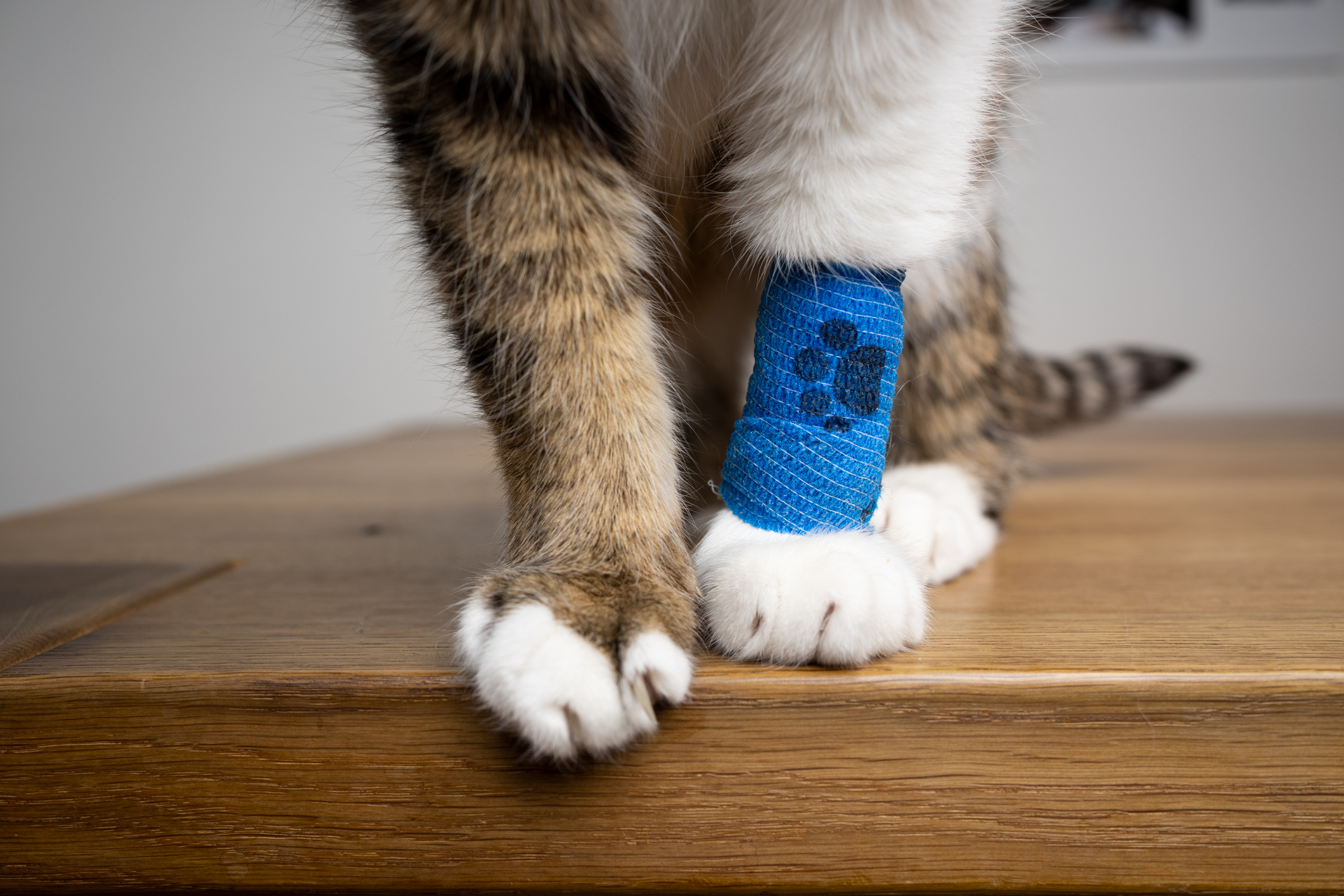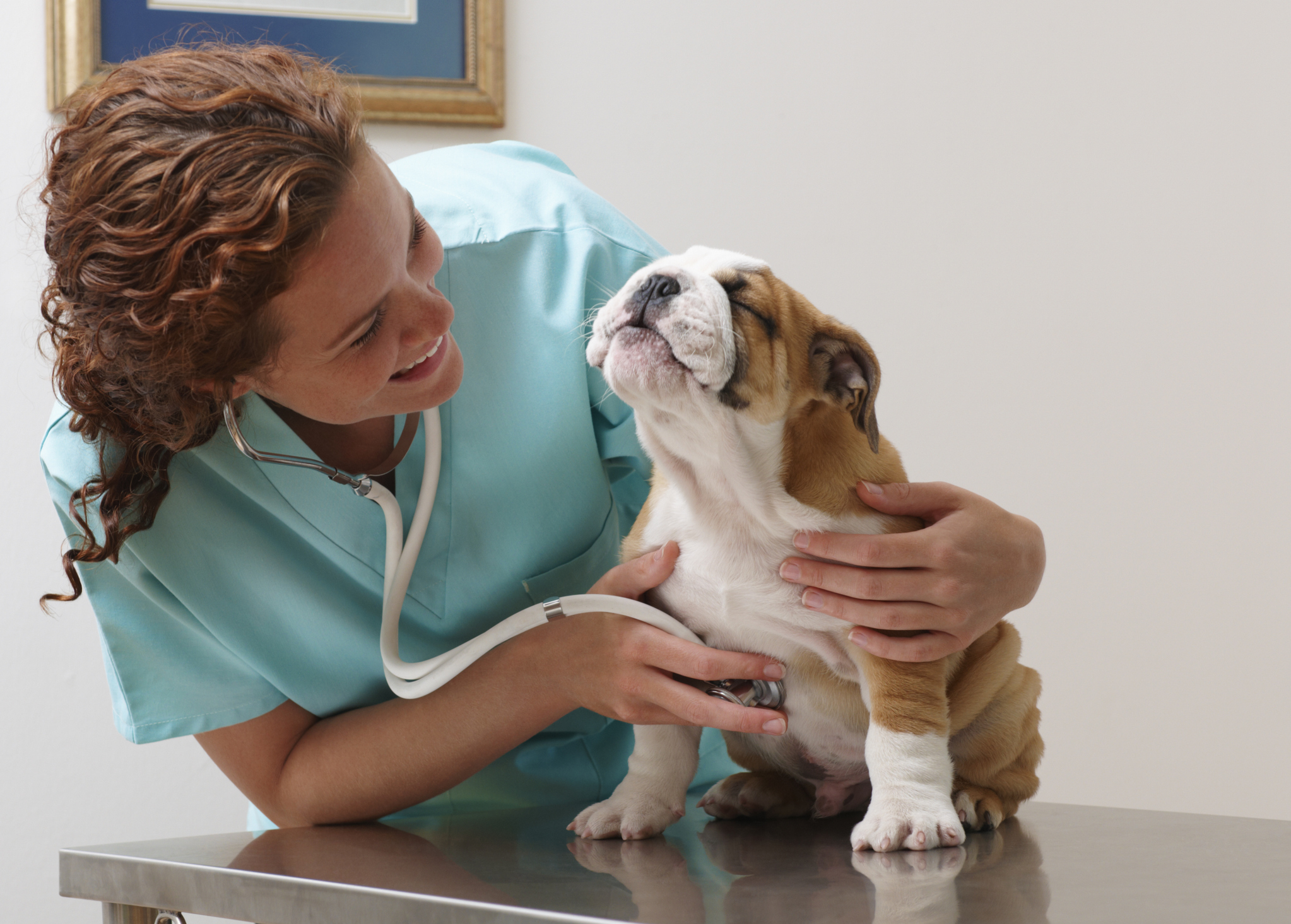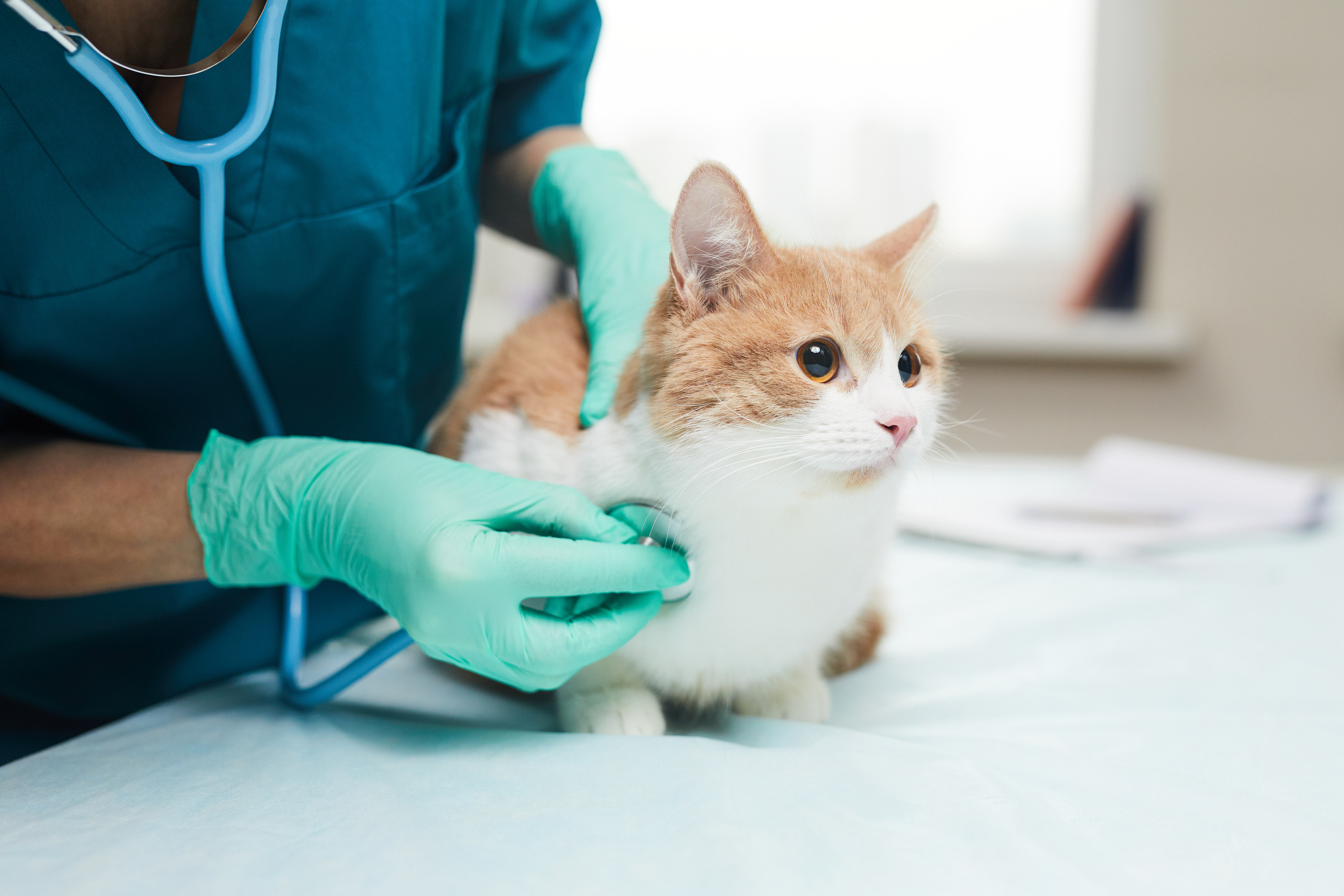What Pet Insurance Does and Doesn’t Cover
Pet insurance can save you thousands on vet bills, but it doesn’t cover everything. Here are the key types of coverage and exclusions you need to know.

A single emergency visit for your sick or injured pet can set you back thousands of dollars or force you to make a heart-wrenching decision you don’t want to make. For around $20 to $40 per month, pet insurance is meant to make vet care affordable so you don’t have to worry about getting hit with an unexpected $5,000+ vet bill.
But, like all types of insurance, there are important limits and exclusions around what your pet insurance will cover. So it’s important to understand what your policy actually covers and what additional coverage types you may need to add to make sure you’re paying for a policy that actually fits your needs.
Every pet insurance policy is unique, but this breakdown of what pet insurance does and doesn’t cover will give you a sense of what to expect and what to look for as you compare plans and customize your coverage options.
From just $107.88 $24.99 for Kiplinger Personal Finance
Become a smarter, better informed investor. Subscribe from just $107.88 $24.99, plus get up to 4 Special Issues

Sign up for Kiplinger’s Free Newsletters
Profit and prosper with the best of expert advice on investing, taxes, retirement, personal finance and more - straight to your e-mail.
Profit and prosper with the best of expert advice - straight to your e-mail.
| Row 0 - Cell 0 | Usually Covered | Usually Not Covered or Costs Extra |
Accident coverage | Accident-related injuries like broken bones, wounds, poisoning, swallowing foreign objects | Any care that isn't related to a covered accident. |
Illness coverage | Diseases or illnesses like infections, allergies, diabetes, cancer, heart disease. | Preexisting conditions, congenital or hereditary conditions, dental diseases, behavioral issues, routine care |
Wellness plans | Preventative care like annual visits, certain vaccines, parasite prevention, certain diagnostic tests. | Dental cleanings, spay and neuter surgery, microchipping and some vaccines or diagnostics may only be offered on higher tier, more expensive wellness plans. |
What Pet Insurance Covers

Pet insurance policies are broken down into accident coverage and illness coverage, with some offering optional wellness plans on top of those two types of coverage. Here’s what kind of health issues are covered by each.
Accident coverage
Even the most basic pet insurance policies will include accident coverage. Accidents include things like your dog accidentally swallowing a toy or your cat breaking their leg after landing wrong when they jumped from the top of your cabinets. It also includes traumatic injuries like cuts or bite wounds as well as pets who eat something toxic.
When an accident happens, pet insurance will typically cover all the costs, from the diagnostic tests needed to identify the problem to the surgeries, medications and overnight hospital stays needed to treat it.
Here are a few common examples of accidents that would be covered by a standard pet insurance policy from Lemonade, Liberty Mutual, USAA and other providers:
- Broken bones and fractures
- Cuts and wounds
- Animal bites (and animal attack-related injuries)
- Car accident-related injuries
- Foreign object ingestion
- Toxic ingestion like chocolate or grapes
- Heatstroke
- Other sudden internal or external injuries that aren’t disease-related
Compare pet insurance quotes at The Zebra
The Zebra is an insurance marketplace that checks over 100 insurers to give you multiple personalized quotes on pet insurance so you can easily compare rates side by side.
Illness coverage
Pet insurance that includes illness coverage will cover almost every other emergency that can send your pet to the vet, but can’t be considered an accident.
Urinary tract infections, skin allergies, heart disease and kidney failure are among the most common pet insurance claims that would be covered under the illness side of an “accident and illness” policy.
According to a recent report from Nationwide, the majority of the most common claims for both cats and dogs are illnesses. So this piece of your policy is key to ensuring you’ll get your money’s worth out of your pet insurance.
Here are some examples of what would be covered by pet insurance that includes illness coverage:
- Urinary tract infections
- Other types of infections
- Bladder stones or urinary crystals
- Active parasitic infestations including fleas and worms (but not routine preventative treatments or screenings)
- Allergies
- Asthma
- Cancer
- Arthritis
- Heart disease
Wellness plans for routine care
Wellness checkups, annual vaccines and other routine care that your pet needs to stay healthy are not covered by pet insurance. This includes things like prescription diets, supplements and other preventative care your pet might need. With that said, most insurers do offer wellness plans that you can add onto your insurance.
These plans aren’t insurance so much as an agreement to pay a certain amount for certain types of preventative care. This usually includes things like vaccines, a certain number of diagnostic tests including bloodwork and x-rays as well as one or two wellness checkups per year. Some wellness plans might even cover dental cleanings and spaying or neutering.
However, go over any wellness plan offered with your vet before enrolling. Depending on where you are and the specific routine care your pet needs, it may be cheaper to pay for each service as needed rather than spring for the added cost of a wellness plan.
In other cases, your vet might offer a wellness plan of their own that ends up being a better deal than the one you can get through pet insurance.
Depending on the plan, here are some services that you'll usually find packaged into a wellness plan:
- Annual wellness visits
- Vaccines (either limited by a certain number per year or by type of vaccine)
- Flea, tick and worm prevention
- Diagnostic tests and screenings (usually limited to a certain number per year, type of test, or maximum reimbursement amount)
- Dental cleanings
- Microchipping
- Spay or neuter procedure
- Health certificate for traveling with your pet
Lemonade pet insurance is one of the top-rated brands among pet owners. Get a customized pet insurance quote today to see how much it would cost to cover your furry friend..
Is accident-only pet insurance worth it?
You can get accident-only coverage if you want to save on pet insurance. But keep in mind that, of the top 10 most common pet insurance claims Nationwide received, according to the report cited earlier, only two of the conditions for dogs and one for cats could be related to accidents. If you had accident-only pet insurance, the majority of the most common conditions that send your pet to the vet would not be covered.
More importantly, five of the top conditions for dogs and six of the top conditions for cats were chronic illnesses like allergies, arthritis or diabetes. If your pet is diagnosed with any of these when you don’t have a policy that covers illnesses, that diagnosis will be a pre-existing condition that all but one pet insurance provider will exclude from coverage.
That’s why the general recommendation is to get pet insurance while your furry friend is young. If you adopted an older pet that comes with preexisting conditions, however, opting for accident-only pet insurance may actually be more cost-effective.
Since you’ll have to pay out of pocket for any treatment related to their preexisting condition anyway, you may want to opt for the lower premium option and budget more money for your pet emergency fund to cover your out of pocket costs.
5 Things Pet Insurance Doesn’t Cover

While a comprehensive accident and illness pet insurance policy might seem like you’ve got all your bases covered, there are some very important exclusions that many plans have. Here’s what you need to know.
1. Preexisting conditions
Nearly every pet insurance provider excludes preexisting conditions. This includes any conditions that were diagnosed before you got a policy with that provider, even if you had other pet insurance at the time. The only pet insurance to date that will cover preexisting conditions (after a one year waiting period) is AKC Pet Insurance.
It’s also important to note that both curable and chronic conditions can be excluded as preexisting, though some providers will make exceptions for curable conditions once your pet has shown no symptoms for a specified period (usually around six months). Again, AKC is the only one so far that will cover both chronic and curable preexisting conditions.
Because of this exclusion, pet insurance is one of the few cases where you want to stick with one provider. Any potential savings from switching insurance to get a lower premium are usually outweighed by the risk that a claim will be denied due to a preexisting condition.
So you can still shop around and switch providers if your pet hasn’t been diagnosed with a chronic condition and you make sure that the new policy will cover any curable illnesses or injuries it has been treated for after a predetermined waiting period. But otherwise, shop for pet insurance with the mindset that this is the coverage you’ll have for the life of your pet.
2. Dental diseases
One set of illnesses that is sometimes excluded or only available as an add-on regardless of whether it’s preexisting or not, is dental disease. While accident coverage might reimburse you for a broken tooth if it broke as the result of an accident rather, common dental issues are often excluded.
Dental illnesses like gum disease and tooth decay ranked as the fourth most common claim for cats and sixth most common for dogs in the Nationwide report mentioned earlier.
So it’s an important one to check for when you’re comparing pet insurance plans. And when plans do include dental illness coverage, note that this doesn’t include routine care like annual dental cleanings.
3. Congenital or hereditary disorders
Conditions that are present from birth or illnesses that your pet is prone to because of its breed might not be covered by your pet insurance.
This includes issues like hip dysplasia, epilepsy, or birth defects. It can also include chronic conditions, such as heart disease and cancer, if they are shown to be hereditary or genetic.
While coverage for congenital or hereditary disorders is becoming more common, it’s still excluded by enough policies that you need to check the fine print before enrolling. Like dental disease, it may be an add-on you need to pay extra to get.
4. Behavioral issues
This is sort of the pet version of mental health. Fear, anxiety and other emotional stressors can lead to behavioral problems like peeing where they shouldn’t, chewing up your belongings or showing aggressive behavior.
Resolving these problems can require a combination of training, medication and lifestyle modifications – all of which may be excluded in your pet insurance policy. While prescribed medications might be covered, the training and other modifications are almost always either excluded or only available as an add-on.
5. Routine and preventative care
As mentioned earlier, routine and preventative care aren’t covered by pet insurance unless you pay for a wellness plan add on. When you file a claim, that means parts of your vet bill may not be reimbursed.
For example, say you took your dog in for her wellness checkup and during a routine parasite screening, the vet found roundworms. When you file a claim, the medication to treat the roundworms will likely be covered but the cost of the vet visit, diagnostic screenings and any future preventative parasitic medication your vet prescribes would not be.
Frequently Asked Questions About Pet Insurance

Here are some quick answers to the questions most pet owners ask when they’re shopping for pet insurance.
Is there pet insurance that covers preexisting conditions?
Yes, AKC pet insurance is currently the only insurer that will cover all preexisting conditions after a one year waiting period. If your pet’s preexisting condition is not chronic, there are some other insurers that cover some curable preexisting conditions after your pet is symptom-free for a certain period (usually about six months).
Does pet insurance cover spaying and neutering?
No, pet insurance does not cover the cost of spaying or neutering your pet. This falls under the category of routine care. You may be able to find an insurer that offers a wellness plan that includes spaying or neutering, but plans that include it are usually pricier than more basic wellness plans.
Does pet insurance cover dental?
Yes and no. If your pet breaks a tooth in an accident, that treatment would be covered under the accident portion of pet insurance.
But gum disease, tooth decay and other dental diseases are usually excluded, even in accident and illness policies. Though, you may be able to pay extra to have that coverage added. As for dental cleanings, these would only be covered if you opted into a wellness plan that includes them.
Does pet insurance cover vaccines?
No, vaccines aren’t covered by pet insurance. While important to get, vaccines are considered preventative care which is excluded. That said, many insurers offer wellness plans as an add-on that often include a certain number of vaccines per year.
What is the best pet insurance for annual visits?
The only pet insurance policies that would provide any coverage for routine annual visits are ones that include a wellness plan add-on. These plans aren’t insurance and usually come with certain reimbursement limits for each procedure included. So, read through them carefully to see what you’re getting. And check with your vet to see if they offer a wellness plan of their own that might include more services or a better price.
Get more insurance tips and other personal finance insights straight to your inbox. Subscribe to our daily newsletter, A Step Ahead.
Related content
Profit and prosper with the best of Kiplinger's advice on investing, taxes, retirement, personal finance and much more. Delivered daily. Enter your email in the box and click Sign Me Up.

Rachael Green is a personal finance eCommerce writer specializing in insurance, travel, and credit cards. Before joining Kiplinger in 2025, she wrote blogs and whitepapers for financial advisors and reported on everything from the latest business news and investing trends to the best shopping deals. Her bylines have appeared in Benzinga, CBS News, Travel + Leisure, Bustle, and numerous other publications. A former digital nomad, Rachael lived in Lund, Vienna, and New York before settling down in Atlanta. She’s eager to share her tips for finding the best travel deals and navigating the logistics of managing money while living abroad. When she’s not researching the latest insurance trends or sharing the best credit card reward hacks, Rachael can be found traveling or working in her garden.
-
 Original Medicare vs Medicare Advantage Quiz: Which is Right for You?
Original Medicare vs Medicare Advantage Quiz: Which is Right for You?Quiz Take this quick quiz to discover your "Medicare Personality Type" and learn whether you are a Traditionalist, or a Bundler.
-
 Ask the Editor: Capital Gains and Tax Planning
Ask the Editor: Capital Gains and Tax PlanningAsk the Editor In this week's Ask the Editor Q&A, Joy Taylor answers questions on capital gains tax rates and end-of-year tax planning
-
 Time Is Running Out to Make the Best Tax Moves for 2025
Time Is Running Out to Make the Best Tax Moves for 2025Don't wait until January — investors, including those with a high net worth, can snag big tax savings for 2025 (and 2026) with these strategies.
-
 4 Smart Ways Retirees Can Give More to Charity, From a Financial Adviser
4 Smart Ways Retirees Can Give More to Charity, From a Financial AdviserFor retirees, tax efficiency and charitable giving should go hand in hand. After all, why not maximize your gifts and minimize the amount that goes to the IRS?
-
 I'm an Insurance Pro: If You Do One Boring Task Before the End of the Year, Make It This One (It Could Save You Thousands)
I'm an Insurance Pro: If You Do One Boring Task Before the End of the Year, Make It This One (It Could Save You Thousands)Who wants to check insurance policies when there's fun to be had? Still, making sure everything is up to date (coverage and deductibles) can save you a ton.
-
 Should You Tap Your Home Equity Before 2026?
Should You Tap Your Home Equity Before 2026?As borrowing rates and tax law shifts converge, here's what homeowners need to know before pulling equity out of their home.
-
 'Politics' Is a Dirty Word for Some Financial Advisers: 3 Reasons This Financial Planner Vehemently Disagrees
'Politics' Is a Dirty Word for Some Financial Advisers: 3 Reasons This Financial Planner Vehemently DisagreesYour financial plan should be aligned with your values and your politics. If your adviser refuses to talk about them, it's time to go elsewhere.
-
 For a Move Abroad, Choosing a Fiduciary Financial Planner Who Sees Both Sides of the Border Is Critical
For a Move Abroad, Choosing a Fiduciary Financial Planner Who Sees Both Sides of the Border Is CriticalWorking with a cross-border financial planner is essential to integrate tax, estate and visa considerations and avoid costly, unexpected liabilities.
-
 21 Money Moves Smart People Are Making Before 2026
21 Money Moves Smart People Are Making Before 2026These steps can help trim your tax bill, boost your savings, lower your health care costs and set you up for financial success in 2026.
-
 A Financial Adviser's Guide to Divorce Finalization: Tying Up the Loose Ends
A Financial Adviser's Guide to Divorce Finalization: Tying Up the Loose EndsAfter signing the divorce agreement, you'll need to tackle the administrative work that will allow you to start over.
-
 Uber Takes Aim at the Bottom Lines of Billboard Personal Injury Lawyers
Uber Takes Aim at the Bottom Lines of Billboard Personal Injury LawyersUber has filed lawsuits and proposed a ballot initiative, in California, to curb settlements it claims are falsely inflated by some personal injury lawyers.

